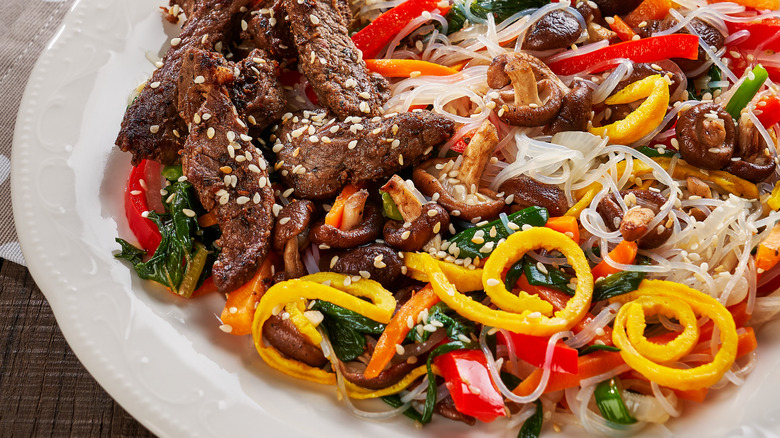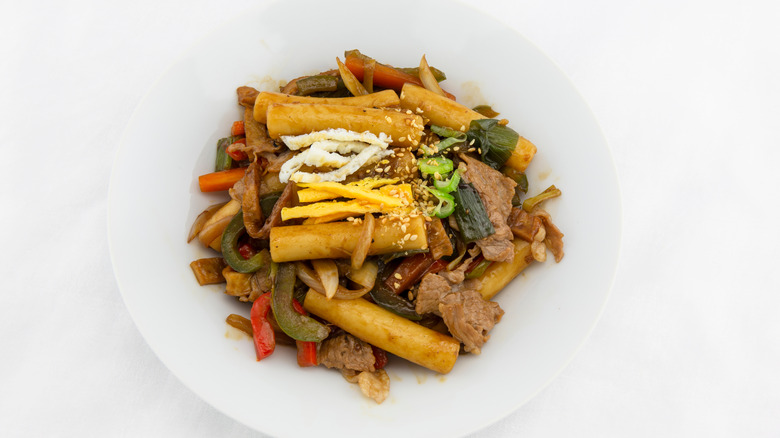Jidan: The Korean Method Of Using Egg For Garnish
It's said that food's aesthetic appearance is as important as its taste because we "eat with our eyes first." It's not just an expression, Eat North reports that this adage has been proven true and research has shown that the appearance of food will influence how we interpret its flavor. That may be just one of the reasons why food is often served with garnishes like edible flowers, or the sprig of mint garnish included in a mojito recipe. These garnishes are more than mere decoration and can lend an appetizing appearance to prime your senses before you even take a bite.
Appearance is especially important in Korean cuisine. According to Gastro Tour Seoul, balancing the five key colors of 'obangsaek' is a key aspect of Korean cooking. The colors white, black, red, blue, and yellow have long held significant meanings throughout Korean culture. They're used heavily in traditional Korean dress, design, and politics. In terms of the culinary world, these five colors signify a well-balanced and healthy meal. This makes sense, as color is one of the strongest visual influences available to us, per Eat North. Seeing a dish like Korean bibimbap – which utilizes a well-balanced color palette — lets diners know that they are about to enjoy a dish of complex, balanced flavors before they've ever taken a bite.
One way that Korean chefs add the colors yellow and white to any dish is to use jidan, a classic egg garnish.
How to prepare jidan
Using eggs to add a rich hue to a dish isn't a unique concept, but jidan does so in its own way. Bburi Kitchen says that the technique originated in Korean royal cooking culture. The yolks and whites of the eggs are separated, gently cooked, and then cut into simple, pleasing shapes. They can then be easily added to soups, stir-fries, braises, or salads to add a pop of yellow or white to a dish, per Hanna One. With the addition of the ubiquitous bright red kimchi, most of the necessities of proper 'obangsaek' are covered.
Aeri's Kitchen says that the first step to making jidan is to separate the egg yolks from the whites and give each a brisk whisking. Then, they need to be cooked slowly over a low flame and with little oil. Bburi Kitchen points out that proper jidan shouldn't be burnt, crispy, or even browned really. That is why the egg should be cooked on medium-low heat to preserve the natural color of the ingredients, and create a homogenous, smooth texture.
Once each of the egg components has been cooked, they can be set aside to cool, and then cut however you'd like. Aeri's Kitchen says that rectangular, thin strips are the most common form, but they can also be cut into more exciting diamond shapes, depending on the dish.

